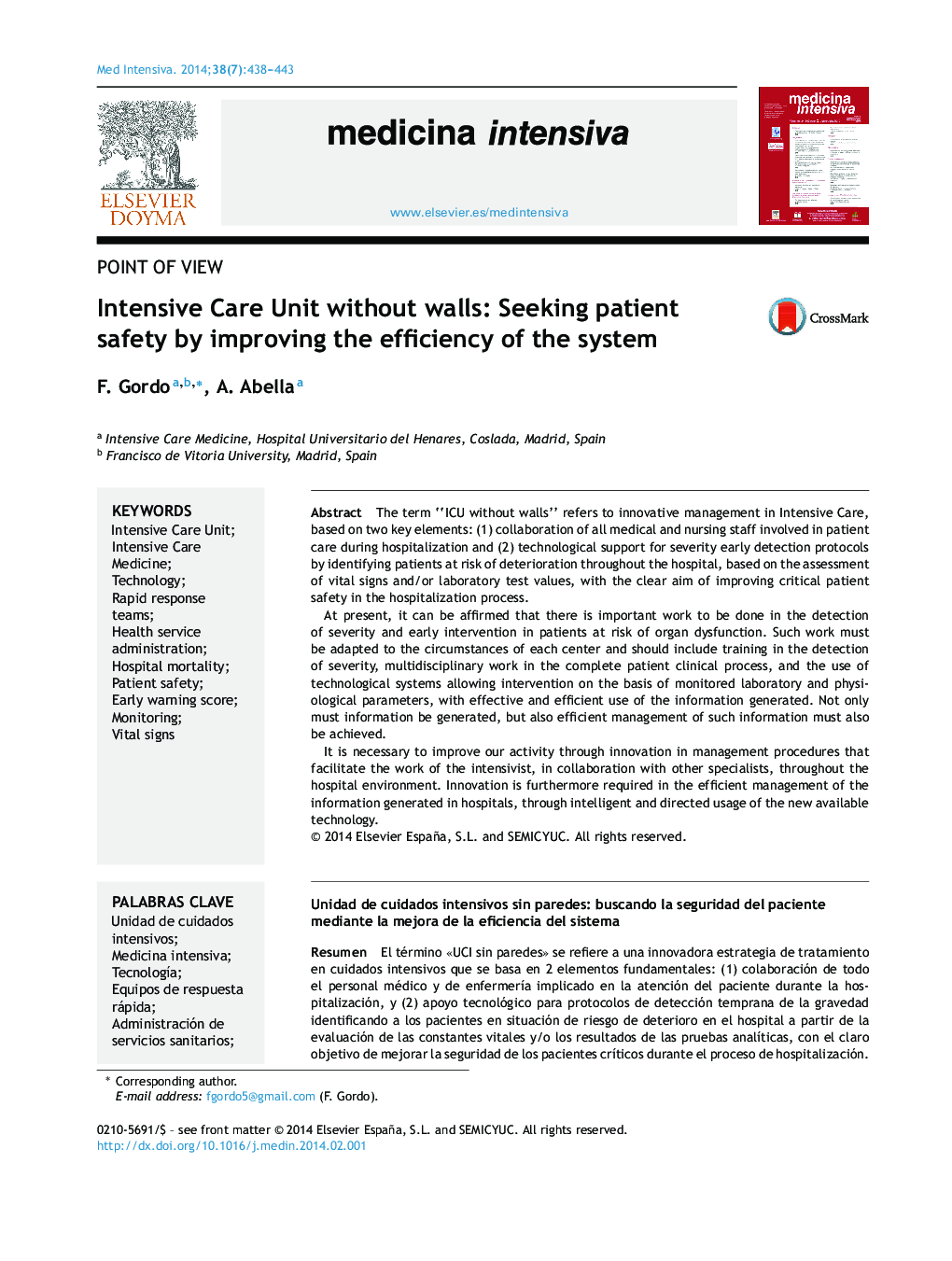| کد مقاله | کد نشریه | سال انتشار | مقاله انگلیسی | نسخه تمام متن |
|---|---|---|---|---|
| 3112852 | 1192340 | 2014 | 6 صفحه PDF | دانلود رایگان |
The term “ICU without walls” refers to innovative management in Intensive Care, based on two key elements: (1) collaboration of all medical and nursing staff involved in patient care during hospitalization and (2) technological support for severity early detection protocols by identifying patients at risk of deterioration throughout the hospital, based on the assessment of vital signs and/or laboratory test values, with the clear aim of improving critical patient safety in the hospitalization process.At present, it can be affirmed that there is important work to be done in the detection of severity and early intervention in patients at risk of organ dysfunction. Such work must be adapted to the circumstances of each center and should include training in the detection of severity, multidisciplinary work in the complete patient clinical process, and the use of technological systems allowing intervention on the basis of monitored laboratory and physiological parameters, with effective and efficient use of the information generated. Not only must information be generated, but also efficient management of such information must also be achieved.It is necessary to improve our activity through innovation in management procedures that facilitate the work of the intensivist, in collaboration with other specialists, throughout the hospital environment. Innovation is furthermore required in the efficient management of the information generated in hospitals, through intelligent and directed usage of the new available technology.
ResumenEl término «UCI sin paredes» se refiere a una innovadora estrategia de tratamiento en cuidados intensivos que se basa en 2 elementos fundamentales: (1) colaboración de todo el personal médico y de enfermería implicado en la atención del paciente durante la hospitalización, y (2) apoyo tecnológico para protocolos de detección temprana de la gravedad identificando a los pacientes en situación de riesgo de deterioro en el hospital a partir de la evaluación de las constantes vitales y/o los resultados de las pruebas analíticas, con el claro objetivo de mejorar la seguridad de los pacientes críticos durante el proceso de hospitalización.En la actualidad puede decirse que todavía queda un importante trabajo por hacer en cuanto a la detección de la gravedad y la detección precoz en pacientes en situación de riesgo de disfunción orgánica. Este trabajo deberá adaptarse a las circunstancias de cada centro e incluir formación para la detección de la gravedad, el trabajo multidisciplinario en el conjunto del proceso clínico del paciente y el uso de sistemas tecnológicos que permitan la intervención a partir de la monitorización de parámetros fisiológicos y analíticos, con un uso eficiente y eficaz de la información generada. No solo debe generarse información sino que también es necesario que esta se gestione de manera eficaz.Es necesario mejorar nuestra actividad mediante la innovación en los procedimientos de gestión que facilitan la labor del intensivista, en colaboración con otros especialistas, en el entorno hospitalario. Además, se requiere innovación para gestionar de forma eficiente la información generada en los hospitales a partir del uso inteligente y eficiente de las nuevas tecnologías disponibles.
Journal: Medicina Intensiva - Volume 38, Issue 7, October 2014, Pages 438–443
